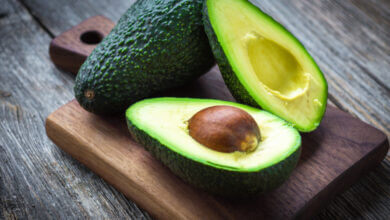Everything You Need to Know About Formica Material

Formica is a laminate material used in kitchen and bathroom countertops, flooring, wall coverings, and other applications since 1912. It’s known for its durability, affordability, and wide range of colors and patterns. In addition, Formica is easy to clean and maintain, making it an ideal choice for busy households.
This article will discuss the history of Formica material and its benefits over traditional materials like stone or wood. We’ll also provide tips on caring for your Formica surfaces, so they look their best for years to come. So if you’re considering using Formica in your home renovations or remodeling projects, read on!
Related article: What are the Symptoms of Asbestos?
Related article: A beginners guide to Guild Education
What is Formica?
Formica is a type of laminate material composed of plastic and paper layers. Formica is highly durable, making it ideal for kitchen and bathroom countertops, backsplashes, and other surfaces that require frequent use. In addition to its durability, Formica is a cost-effective material that comes in various colors and patterns that suit any design aesthetic.
Pros of Formica
1. Durable
Formica is a highly durable material resistant to scratches, stains, and heat. This makes it an ideal choice for busy households or commercial spaces that need surfaces that can withstand frequent use. Formica is affordable compared to other options like marble or granite.
It can also be found in various colors and patterns, allowing you to get the look you want without breaking the bank. Formica is easy to clean and maintain. It requires regular wiping down with a damp cloth to keep your surfaces looking their best.
Related article:
Why should we use a Flywheel in an Engine
2. Versatile
Formica is a versatile material used in various applications. It’s ideal for countertops, backsplashes, floors, and wall coverings. Formica is a hygienic material that resists bacteria and mold growth. This makes it an ideal choice for kitchens and bathrooms where cleanliness is essential.
Cons of Formica
1. Not Heat Resistant
While Formica is generally resistant to heat, it can start to warp or crack if exposed to extremely high temperatures. It’s best to use a trivet when placing hot pots and pans on Formica surfaces to avoid damage. There are a variety of colors and patterns available in Formica. They may not be as varied as other materials like stone or wood.
2. Can Peel Over Time
Formica surfaces can peel or bubble over time without proper maintenance. It’s essential to regularly clean and reseal your Formica surfaces to avoid any damage. Formica can be susceptible to scratches and scuffs, so avoiding abrasive cleaners when cleaning your surfaces is essential.
Related article:
President Biden announces Student Loan Relief
Caring for Formica Surfaces
To keep your Formica surfaces looking their best, wipe them down regularly with a damp cloth to remove dust and debris. Never use abrasive cleaning products on Formica surfaces, as this can cause damage to the material. Placing hot items directly onto Formica can cause it to warp or crack, so use coasters or trivets when placing hot pots and pans on countertops. Certain harsh chemicals can damage Formica surfaces, so avoiding any strong cleaning products is best.
Formica is an affordable and durable material perfect for kitchen and bathroom countertops, backsplashes, walls, and floors. It’s easy to clean and maintain, making it an ideal choice for busy households. Remember to use coasters or trivets for hot items, and avoid harsh chemicals when cleaning your Formica surfaces. With proper care, your Formica surfaces can look great for years!
Related article:
What is the Economics System in the United States
Method to Apply Formica
Measure the area you are planning to install Formica on. Make sure to take note of any curves, edges, and edges with rounded corners. Cut the Formica material to match the measurements of your space using a circular saw or hand-held scoring tool.
Clean the surface where you apply the Formica with a damp cloth and allow it to dry before proceeding. Apply a thin layer of contact cement on the back of the Formica and the surface you will attach. Allow the cement to sit for around 15 minutes until it becomes tacky.
Place the Formica onto the surface continuously, pressing down firmly to securely attach it. Trim the edges of the Formica with a sharp utility knife and sandpaper any rough spots or cutters. Apply a thin sealant layer to protect the surface from moisture and staining. Allow it to dry before using your Formica countertop, floor, or wall covering.
Related article:
What is Practicum? A Complete Guide
Lifespan of Formica and Should You Use Formica or Not?
When deciding if Formica is a suitable material for your project, it’s essential to consider its unique characteristics. Some of the benefits of using Formica include affordability, a massive range of colors and patterns, easy cleaning and maintenance, and resistance to staining.
In addition, Formica is usually more affordable than natural stone or wood, requires less maintenance and upkeep, is easier to clean, and has a much more comprehensive range of colors and patterns. The main downside of Formica is that it needs more warmth and the natural beauty of more traditional materials.
Formica is very durable, so you can expect it to last many years with proper care. In addition, Formica has been known to last up to three times longer than other materials, such as wood or stone countertops.
Related article:
What is Scentsy? Is Scentsy Toxic?
This makes it an excellent choice for busy households that need reliable and long-lasting materials. The average lifespan of Formica is around 20 years, although it can last even longer if taken care of properly.
What are the best Alternatives to Formica?
Formica is an excellent option if you’re looking for a material that’s more affordable than stone or wood but still offers durability and easy maintenance. However, other materials on the market provide similar benefits.
Solid surfacing materials like Corian, Avonite, Hi-Macs, and Staron can be good alternatives to Formica, though they are more expensive. A laminated wood veneer is also a popular alternative that gives the look of natural wood but is more durable and less prone to scratches and warping. The cost of laminated wood veneer is also generally lower than stone or solid surfacing materials.
Related article:
Surviving 4th Degree Burns a journey to Recovery Healing
If you’re looking for an even more cost-effective alternative, laminate flooring may be right for your needs. Laminate flooring is available in a wide range of colors and patterns and can easily mimic the look of stone or wood at a fraction of the price. While laminate is not as durable as Formica, it can still last for many years with proper care.
No matter what material you choose, it’s important to consider maintenance and cleaning requirements when making your selection. Formica is easy to care for but other materials may require more work in order to keep them looking their best. Be sure to research the best way to clean and maintain each material before making your decision.
Our Verdict
Formica is a popular laminate material that has been used in homes and businesses around the globe for over a century. It’s known for its affordability, durability, and wide range of colors and patterns. In addition, Formica is easy to clean and maintain, making it an ideal choice for busy households.
With proper care, your Formica surfaces can look great for years. So if you’re considering using Formica in your home renovations or remodeling projects, read on and learn everything you need about this versatile material!





